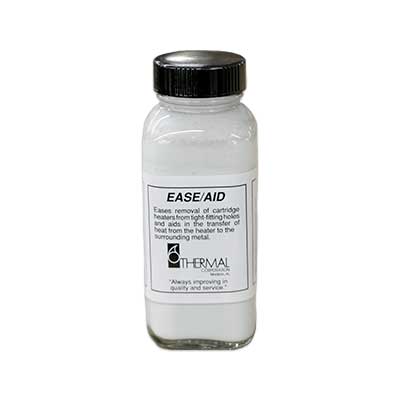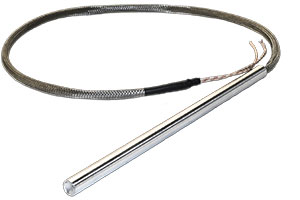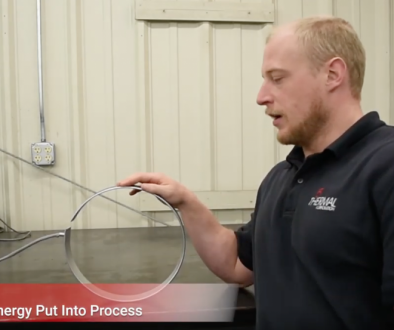Tips for Extending the Life of Cartridge Heaters
Home > Blog Archive > Category: Industrial Heating Technology > Tips for Extending the Life of Cartridge Heaters
Listed below are some tips for extending the life of cartridge heaters.
#1 Avoiding Contamination

- When using a release agent, such as Thermal Corporation’s Ease-Aid, to ease heater removal from its hold, be sure to wait until agent is bone dry before inserting the heater into the hole. If the heater is inserted before the agent is dry, some of the liquid will usually be pushed towards the lead end and then will soak into the heater through the lead insulation or through the lava or ceramic plug at that end. When that happens, the heater can be expected to fail as soon as the power is applied. (Choosing the lead option of Teflon wire insulation and a Teflon plug can reduce the likelihood of water entering the heater, but this does not provide a fully hermetic seal, and the lead end of the heater must be restricted to 400°F).
- Moisture, oil, and other liquids on the lead wires can be wicked into the heater and cause early failure.
- Oil or other organic material on the lead end cap of the heater will carbonize at elevated temperature, causing a short from the leads to the sheath.
#2 Avoiding Over-Temperature
- A loose fit of the cartridge heater in its hole will reduce the heater’s life time because the heat generated is not transferred efficiently to the object or material being heated, causing the heater to run at a higher temperature to transfer its energy. The higher the operating temperature, the shorter the lifetime. A rule-of-thumb for the fit is to make the hole diameter no more than .005 inches greater than the diameter of the heater.
- Choose the lowest wattage heater that will maintain the desired operating temperature of the part being heated and still provide a short enough start-up time. Choosing a heater with a higher wattage than required will result in the controller turning the heater on and off to maintain the desired temperature and a higher operating temperature during on-time. These conditions will shorten the heater life.
- If used as an immersion heater, the type of fluid and its velocity passing over the heater are important factors. Ask for assistance from a Thermal Applications Engineer.

#3 Excessive Cycling
- The way that Thermal Corporation evaluates the lifetime of their own cartridge heaters and those from competitors is to cycle the units from 150°F to 1,400°F and count the cycles to failure. Cycling reduces lifetime because the surface of the element wire oxidizes rapidly at higher temperatures; if the higher temperature is maintained, the oxide coating actually protects the wire from further oxidation, but if the wire temperature is reduced substantially, the oxide coating breaks off due to contraction and exposes fresh metal to more oxidation. With continuous cycling, the wire diameter is eventually reduced, and the resistance of the element is increased to the point that it becomes too hot. At that point, the element wire either melts and breaks open the circuit, or it causes the insulation over the wire to break down, causing a short to the sheath.
Edited by Shelby Reece
Date Published: 07.03.2018
Last Updated: 09.06.2019


